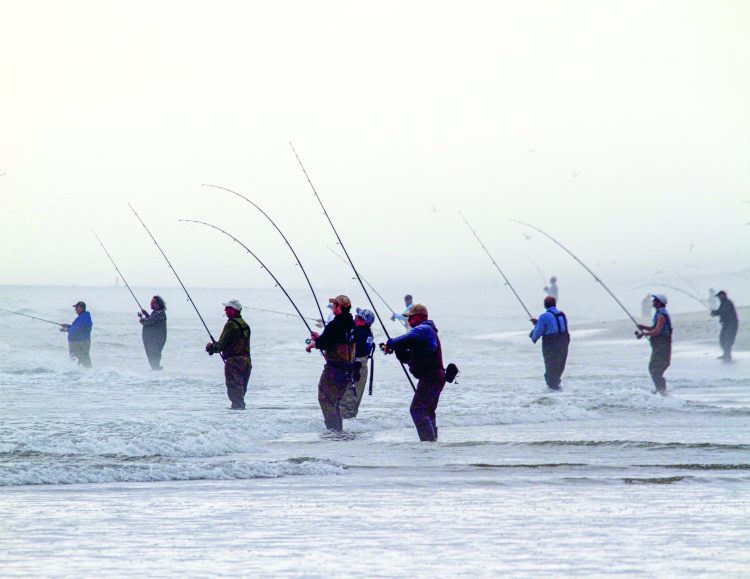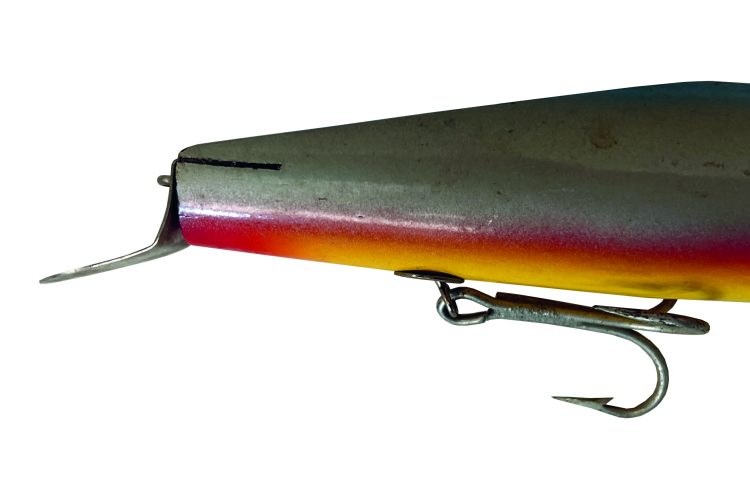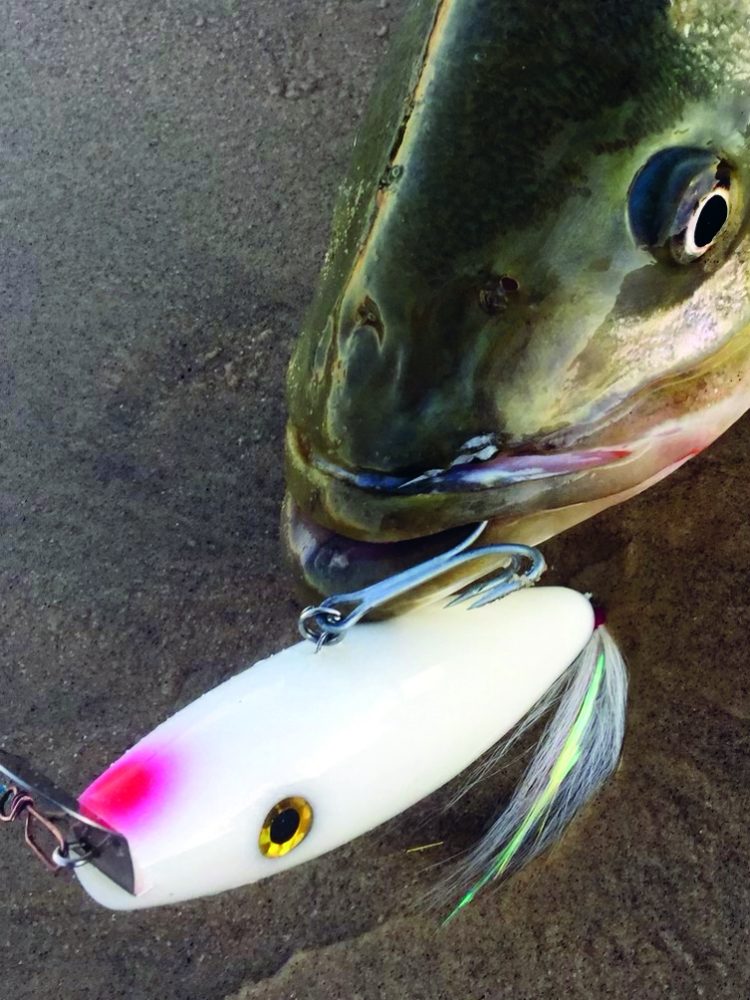Rules of the Surf
The unwritten rules of surfcasting help anglers to continue to learn and grow, no matter their age or experience level.

Surfcasters often operate by maxim. These so-called “rules of the game” continue to influence salty veterans and offer those new to the sport the basic fundamentals to help them connect to a striped bass from the beach. Whether it’s “fish the tides, not the times of the day,” “throw dark-colored plugs at night,” or “hit the beach with bucktails at the beginning of a Nor’easter,” the list of surfcasting proverbs passed down over the years are rich with history and carry certain truths that take years to master.
As we transition from the summer to the fall months, I keep thinking back to my first outing this past spring in the New Jersey back bays when the air temperature was still in the low 40s, but the water temperatures had been steadily climbing. It was the beginning of the season and I had dutifully checked my logs, the tides, and the winds, and was lucky enough to find a few slot-size stripers aggressively taking a minnow plug just as the tide began to ebb and the sun dropped below the horizon. I was even more fortunate, however, to start up a conversation with an old-timer casting next to me who was also tight to the same class of fish.
The “rule of silence” in surfcasting is sacrosanct. At night, you can make out only the dark silhouettes of casters to your left and right. Certainly, no one is talking and there’s good reason for that. People hit the beach to get a break from the stresses of the day and if you happen to be catching and have figured out what the fish are hitting, your lure selection becomes a piece of well-protected, proprietary information. That said, the general air of tension and anticipation one feels at the beginning of a night session immediately dissipates after the first few fish are landed. When the casters next to you are also catching, you can feel the atmosphere turn somewhat jubilant, by surfcasting standards, as everyone around you seems content and their guards become lowered.
As we were releasing fish at the same time, I mentioned to the old-timer next to me that I could see very large spearing darting around when I turned my light on remove the hook from a fish. The response I received was memorable, as I was soon taught about the early season migration of adult spearing that had wintered over in the back bay we were fishing, which the bass were clearly feeding on. Up to that point, I had only encountered these baitfish in the summer and fall, so I made sure to note this event in my log for next year.
As the conversation ensued, we discussed the great run of stripers New Jersey experienced in the fall of 2022. My new friend mentioned that metal-lip plugs were very productive and he had landed fish in excess of 40 pounds. I explained that while I was fortunate enough to catch my share of fish during that great run, they were nowhere near that size and I could not get a touch on a metal lip. Graciously sharing his knowledge, the old-timer taught me a few tips to fine-tune the lure so that it ran just beneath the water—not too deep, yet not on the surface making the classic V-wake pattern either.
A few weeks later, those tips worked out very well. The spearing in the bay were replaced by adult bunker and the larger striped bass that followed them in completely keyed in on larger-profile baits. Despite years of trying, I finally experienced the mysticism of a metal-lip bite thanks to a few tweaks I was taught on a sod bank by a stranger who was willing to share some information.
Surfcasting Skills: Tune a Metal Lip
The depth at which a metal-lipped lure swims can be adjusted on the fly by the angler with just a pair of pliers. By bending the lure’s line tie up or down, it can cause a lure to swim deeper or shallower.


At this point in my surfcasting journey, I’ve put a fair amount of years into the surf, along with sleepless nights and long drives to catch some memorable fish. In just one night, though, the old-timer schooled me on bait migrations and the specifics of a lure that had eluded me, as well as a dozen other lessons too lengthy to describe here. This chance meeting called to mind one rule that should be number one on a surfcaster’s list: “Listen and Observe.” Not only does this apply when scouting the beaches for signs of structure and life, but it’s especially true when someone who’s been at this sport for a long time is willing to share knowledge. Those lessons are golden and become part of the surfcasting lore.

And, finally, as the air begins to cool again and the anticipation of another fall run beckons, there was one parting comment from the old-timer that deserves specific mention. As we exchanged stories about specific spots at certain tides and were shaking hands to return to our trucks, he looked at me and delivered a sober truth: “Remember, kid, no matter how many fish you catch, you will never be good at surfcasting. No one is good at this sport.” It’s a healthy reminder in this day and age of social media and nearly instant reports because what works one day could be a total flop the next. What truly matters is putting in your time, having the experience and knowledge to adjust to conditions, and figuring things out on your own. Those rules will never change.
Related Content
11 on “Rules of the Surf”
-
JOHN T COLTON Thanks for the info.
-
W. Rod Such a well composed story and more so, an even better experience with an old timer who shared his thoughts and experiences. And the rookie wasn’t even charged a dime for it!!
-
Bob Really strange. The photos show the metal lip, not the line tie, bent downward . I thought you’re not supposed to alter the shape of the metal lip, only the line tie.
-
-
Eric Absolutely one of the best articles this amateur has ever read. I’d never heard of nor thought about these ideas before yett every word rang true. It also gave me hope that if I stop off for an impromptu night of surf casting, I’ll now know I’ve gotta pay attention to what I’m doing and, if necessary, adjust, rather than chalking it up to “poor conditions” or “lack of fish”. Thanks to the author.
-
Ray Iglesias Awesome information
-
Gamble Priceless
-
Eric Arbo A vary well said article.
It does change so often it can seem to be crazy at times.
What might work on arriving may not work a hour later. Or work just once an then not again for a week or months.
Which is why it’s call fishing and not catching. -
Joe There’s great stuff in here, no doubt, but I’m surprised no one caught that it says bend the line tie, but in the pictures the metal lip is bent. I learned from a book years ago to bend the eye up if you want it to dive deeper and bend the eye down to have it swim shallower.
-
Roger D. Malouf Are you sure you didn’t mislabel the shallow and deep running baits? The greater the angle of the lip….the deeper the lure dives…. I always found?
-
Judi Parker Vey articulate! I’m a senior lady and totally enjoyed your story. I have sons that are avid about the sport. I’m passing this along to them. Thank you for sharing!
-
NCDUCK Awesome piece by a true sportsman… rare these days.
Leave a Reply